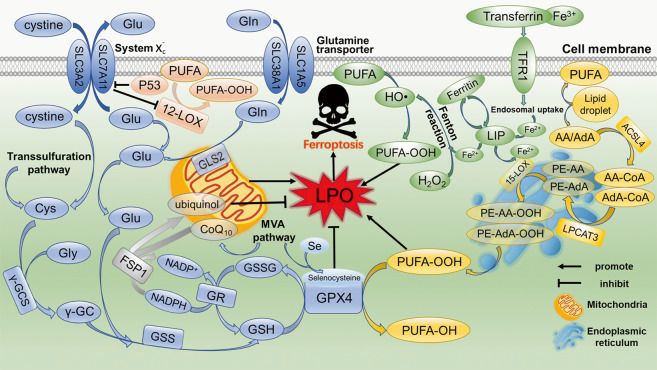Fig. 1. Mechanisms of ferroptosis.
The excessive production and failure of elimination of LPO are key causes of ferroptosis. The pathways of eliminating LPO includes system /GSH/GPX4 axis and NADPH/FSP1/CoQ10 axis. The cystine ingested by system is catalyzed to GSH by γ-GCS and GSS. GPX4 converts GSH to GSSH to reduce LPO and inhibit ferroptosis. FSP1 catalyzes CoQ10 to ubiquinol by NADPH, which acts as a lipophilic radical scavenger that reduces LPO. The PUFA-OOH is the main source of LPO. Main peroxidation target PUFAs are AA/AdA mainly present in the endoplasmic reticulum compartment. After catalyzed by ACSL4, LPCAT3, and 15-LOX, AA/AdA is converted to PE-AA-OOH/PE-AdA-OOH to promote ferroptosis. The Fenton reaction mediated by Fe2+ produces a large number of HO• to promote the peroxidation of PUFA. P53 transcriptionally inhibits SLC7A11, leading to the production of 12-LOX-mediated PUFU-OOH upon ROS stress. In addition, transsulfuration pathway, MVA pathway and glutaminolysis also participate in the regulation of ferroptosis

